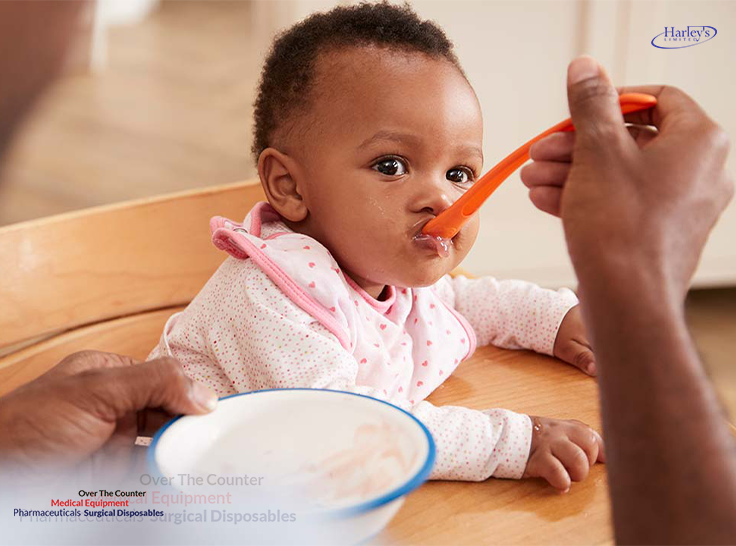Finally, you put your baby to sleep. Successfully if you say so yourself.
So you tiptoe out of the infant’s nursery, foolishly thinking your baby is sound asleep for a couple of hours.
Lo and Behold!!! Because your baby’s cutting a tooth, he/she is wide awake again, whining and screaming their lungs out!! My goodness, what is sleep?

Source: Baby gooroo
Anyway, how do you know your baby is in the teething zone? Here are signs you may note:
- Not sleeping very well
- More irritable than usual
- Gum is sore and red where the tooth is coming through
- Mild temperature of 38 degrees Celsius
- Flushed cheek
- Rash on their face
- Rubbing their ear
- Drooling more than usual
- Gnawing and chewing on things a lot
If you find yourself in the teething zone – which happens somewhere between 4 months and about 2 years old – you don’t have to be stuck there. We have suggested some teething remedies so you and your baby can live your best life, one tooth at a time. They are:
Wet cloth – freeze a clean, wet cloth, then give it to your baby to chew on. It aids in decreasing inflammation along the gums
Teething rings and toys – they are easy for babies to grasp and provide the necessary pressure to soothe sore gums.

Source: iStock
Cold food – for babies eating solid foods, serve cold foods such as yoghurt and frozen or refrigerated fruit.

Dentinox Teething Gel – this is suitable for babies above 5 months. Just rub a bit of our teething gel on their gums if non-medicated methods such as massaging gums or the use of teething rings don’t provide sufficient relief. To purchase this teething gel, Call/WhatsApp/Text our sales team +254 746 442 699 or email sales@harleysltd.com (If you have any questions about using Teething Gel, talk to your paediatrician, pharmacist or health professional).

Source: Getty Images
What order do baby teeth appear in? Here’s a rough guide:
- bottom incisors (bottom front teeth) – these are usually the first to come through, usually at around 5 to 7 months
- top incisors (top front teeth) – these tend to come through at about 6 to 8 months
- top lateral incisors (either side of the top front teeth) – these come through at around 9 to 11 months
- bottom lateral incisors (either side of the bottom front teeth) – these come through at around 10 to 12 months
- first molars (back teeth) – these come through at around 12 to 16 months
- canines (between the lateral incisors and the first molars) – these come through at around 16 to 20 months
- second molars – these come through at around 20 to 30 months

Reference
Baby teething symptoms. (2019). Retrieved 20 April 2022, from https://www.nhs.uk/conditions/baby/babys-development/teething/baby-teething-symptoms/
